Phonics & Early Reading
Learning to read; reading to learn.
Teach a child to read and keep that child reading and we will change everything. And I mean everything.
Jeannette Winterson, author
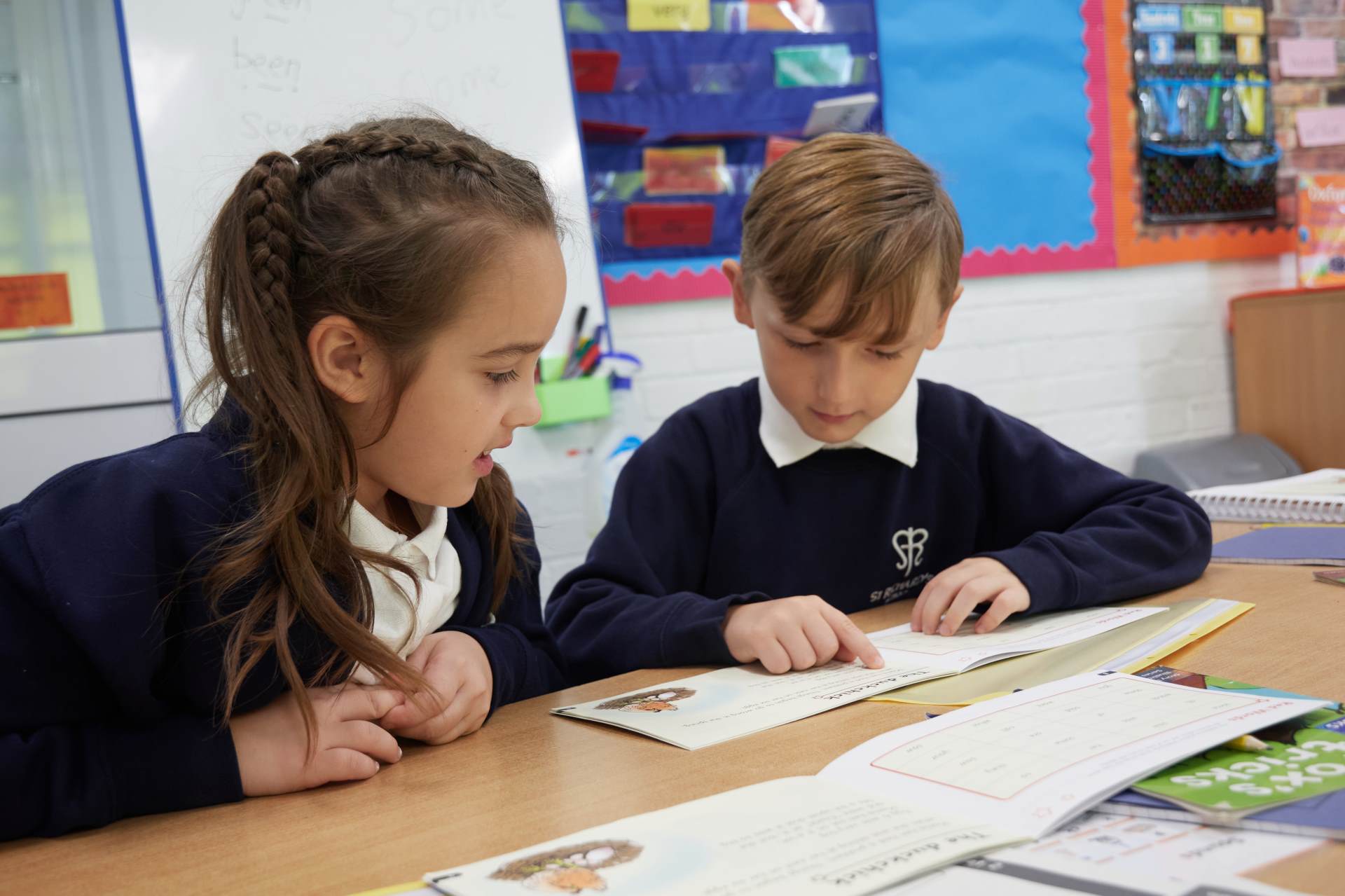 At St Richard's CE Primary School we regard reading as a fundamental life skill and the key to unlock learning. We have a determination that every child, regardless of their background, needs or abilities, will become a fluent reader with a love of reading.
At St Richard's CE Primary School we regard reading as a fundamental life skill and the key to unlock learning. We have a determination that every child, regardless of their background, needs or abilities, will become a fluent reader with a love of reading.
 Children are taught to read using the Read Write Inc. programme developed by Ruth Miskin.
Children are taught to read using the Read Write Inc. programme developed by Ruth Miskin.
What is Read Write Inc.?
Read Write Inc. (RWI) is a phonics-based programme which helps children learn to read. Children learn the sounds of the letters and then blend them together to read words. The children also learn to break down words into individual sounds in order to write them.
//www.youtube.com/embed/sjlPILhk7bQ#t=0.5
Who is Read Write Inc. for?
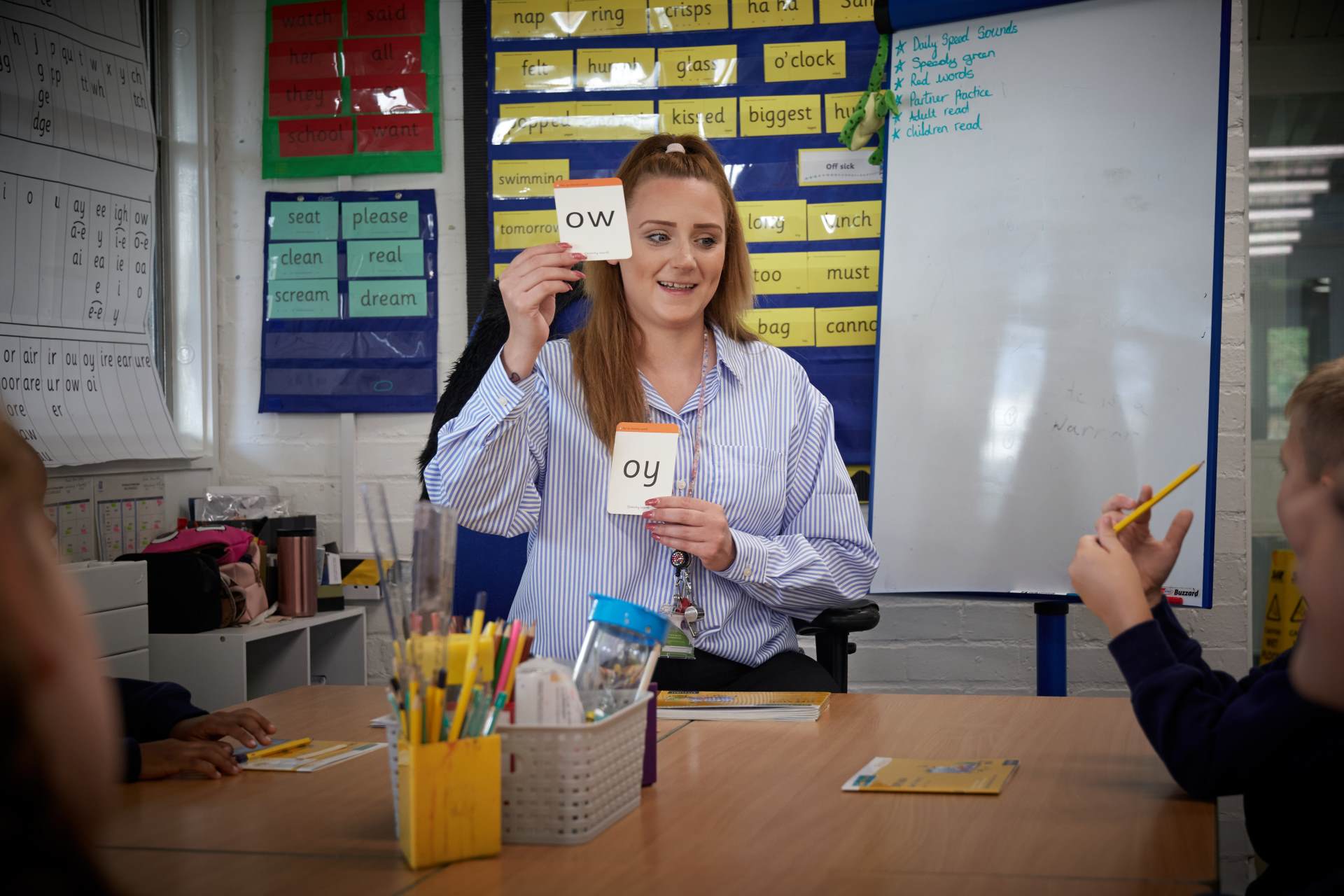 The Read Write Inc. programme is for primary school children learning to read. Children will begin the programme in Nursery and will remain on the programme until they are reading at the expected standard in Year 2. Our aim is for all children to reach the expected standard, however some children may remain on the scheme into Key Stage 2.
The Read Write Inc. programme is for primary school children learning to read. Children will begin the programme in Nursery and will remain on the programme until they are reading at the expected standard in Year 2. Our aim is for all children to reach the expected standard, however some children may remain on the scheme into Key Stage 2.
How to say the sounds
Children make the best progress when their learning is supported at home. However, it is also important that children say the phonic sounds correctly. To help parents and carers, this short video demonstrates how to say each sound.
//www.youtube.com/embed/TkXcabDUg7Q#t=0.5
The phonic sounds
At the end of their time in Nursery or when they start Reception, children start the Read Write Inc programme. They begin by learning the Set 1 sounds. There are 21 sounds in this set:
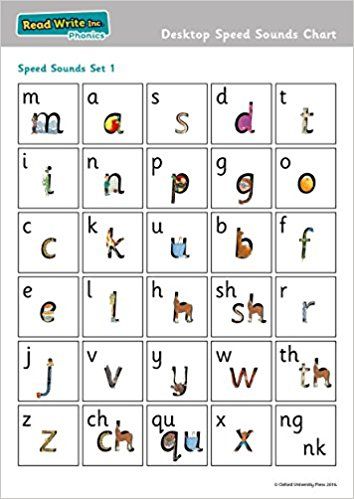
Children then move on to learn the Set 2 sounds. There are 12 sounds in this set. Sounds that are made by two or more letters are called 'special friends' e.g. sh, th, ay, oa, or etc.
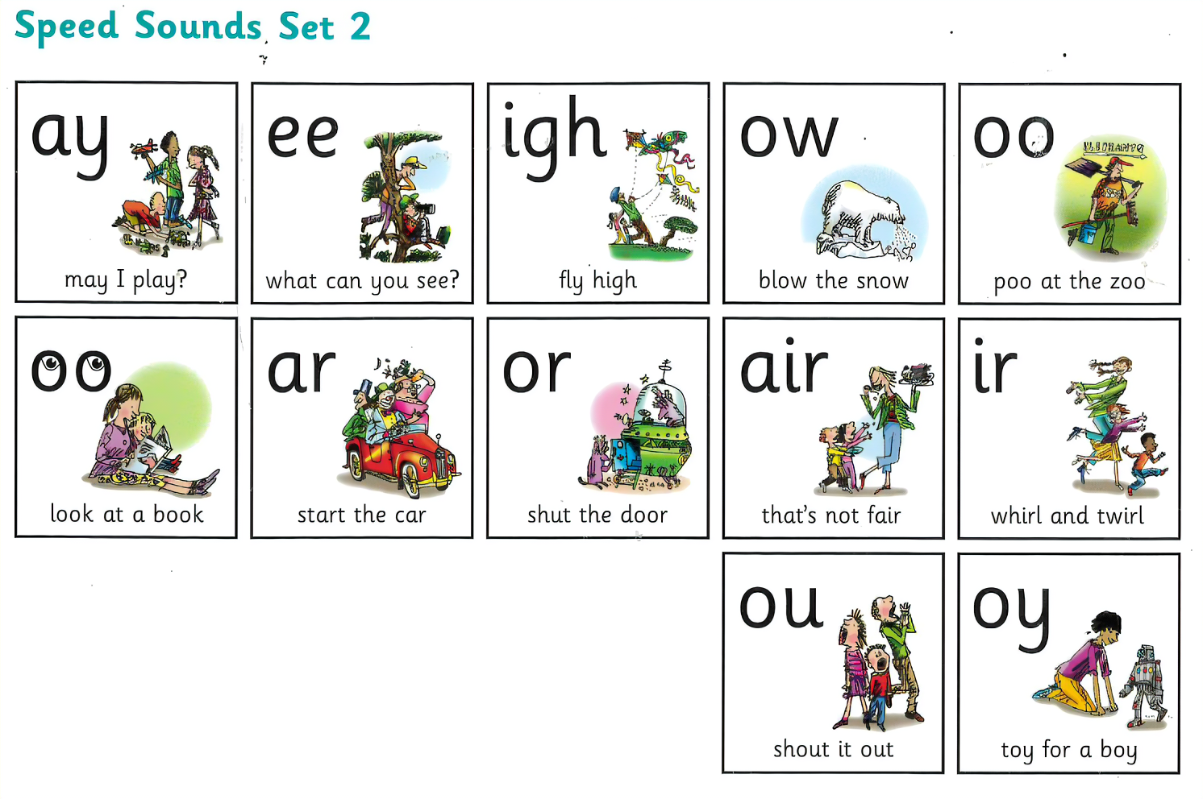 Finally, children learn the Set 3 sounds. There are 19 sounds in this set.
Finally, children learn the Set 3 sounds. There are 19 sounds in this set.
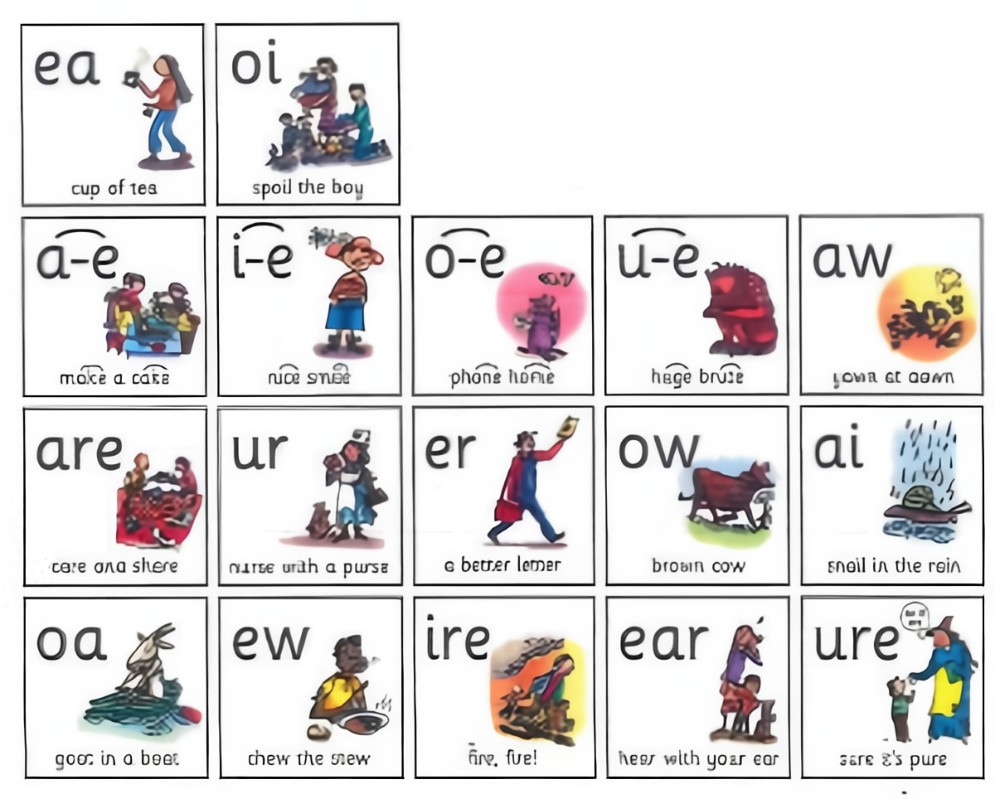
Helping children to blend
Once children know the individual phonics sounds , they then blend them to help read words. The children are introduced to Fred Frog, who is an expert on sounding out words. This is called 'Fred Talk'. For example, children sound out m-u-d and then blend the sounds to read 'mud'.
//www.youtube.com/embed/_cH-dENSob4#t=0.5
When children become confident, they are encouraged to use 'Fred in your Head' where they say the sounds in their head and don't vocalise them. They then blend and say the word out loud. Children are encouraged to point to each sound and then run their finger under the whole word to blend.
//www.youtube.com/embed/fxt_WCMme10#t=0.5
Children use 'Fred Fingers' to help them spell. To do this they hold up a finger for each sound e.g. l-igh-t. The child would hold up one finger for each sound, so three fingers in total. They would then write each sound, knowing they need three sounds to write the word 'light': l-igh-t. The Fred Fingers techniques helps children apply their phonic knowledge to help them spell.
Red and green words
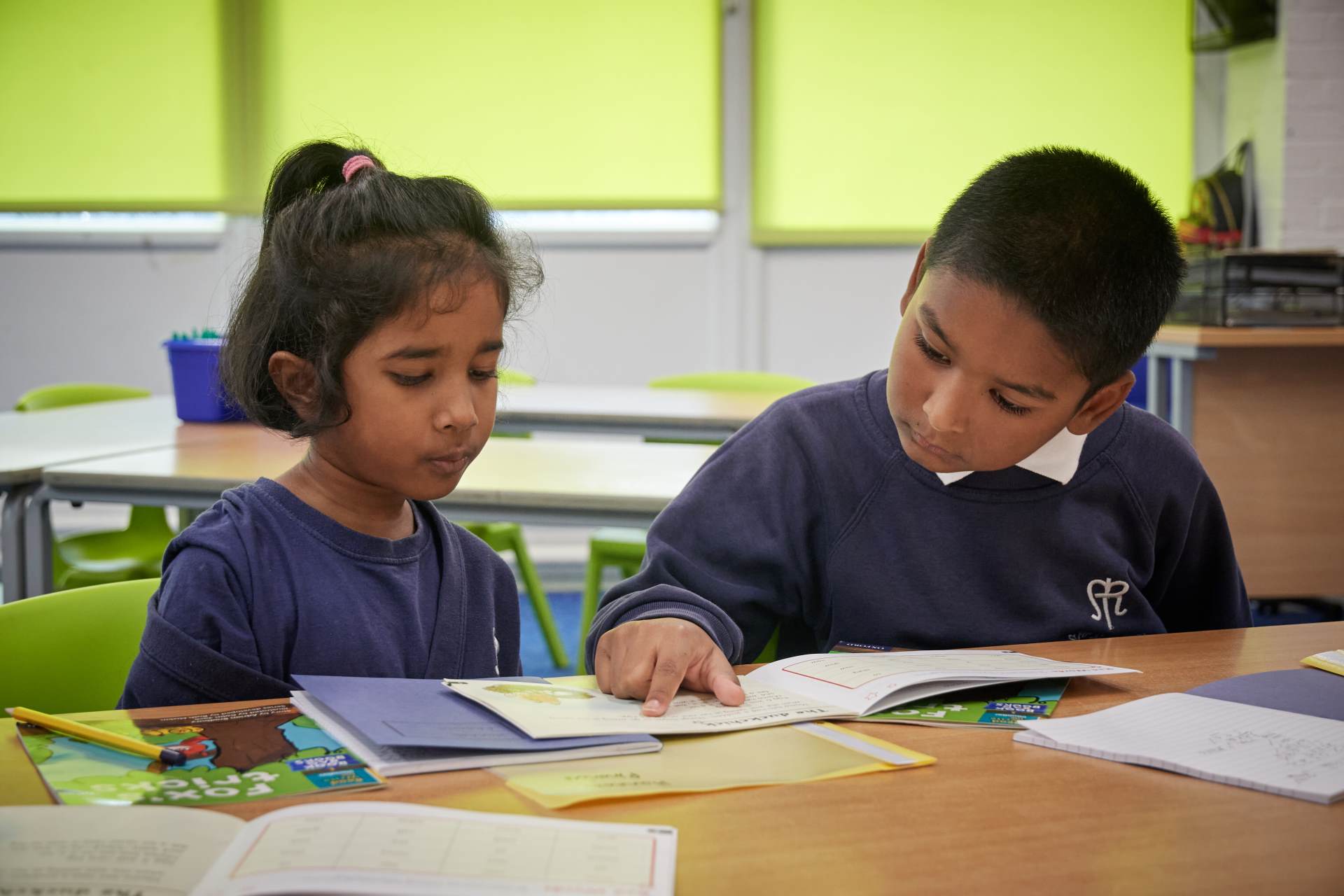 Before starting to read their book, children practise the green and red words they will encounter in the book. Green words can be read phoentically using the Fred Frog strategies above.
Before starting to read their book, children practise the green and red words they will encounter in the book. Green words can be read phoentically using the Fred Frog strategies above.
Red words are not phonically decodable, which means they cannot be sounded out. Children have to learn these words by sight.
Progressing through the levels
Children start by learning the Set 1 sounds. They then use these to progress through the Ditty and Red levels. When they reach Green level, they start to learn the Set 2 sounds. Once they reach Pink level, the Set 3 sounds are introduced. Children are expected to be at a certain level at different points throughout Reception, Year 1 and the start of Year 2. The progression and expected level is shown in the table below:
|
Set 1 Sounds |
Ditty |
Red |
Green |
Purple |
Pink |
Orange |
Yellow |
Blue |
Grey |
| Start of Reception or end of Nursery | Start of Spring Term in Reception | End of Spring Term in Reception | End of Reception | Middle of Autumn Term in Year 1 | End of Autumn Term in Year 1 | Middle of Spring Term in Year 1 | End of Spring Term in Year 1 | End of Year 1 | End of Autumn Term in Year 2 |
Practising at home
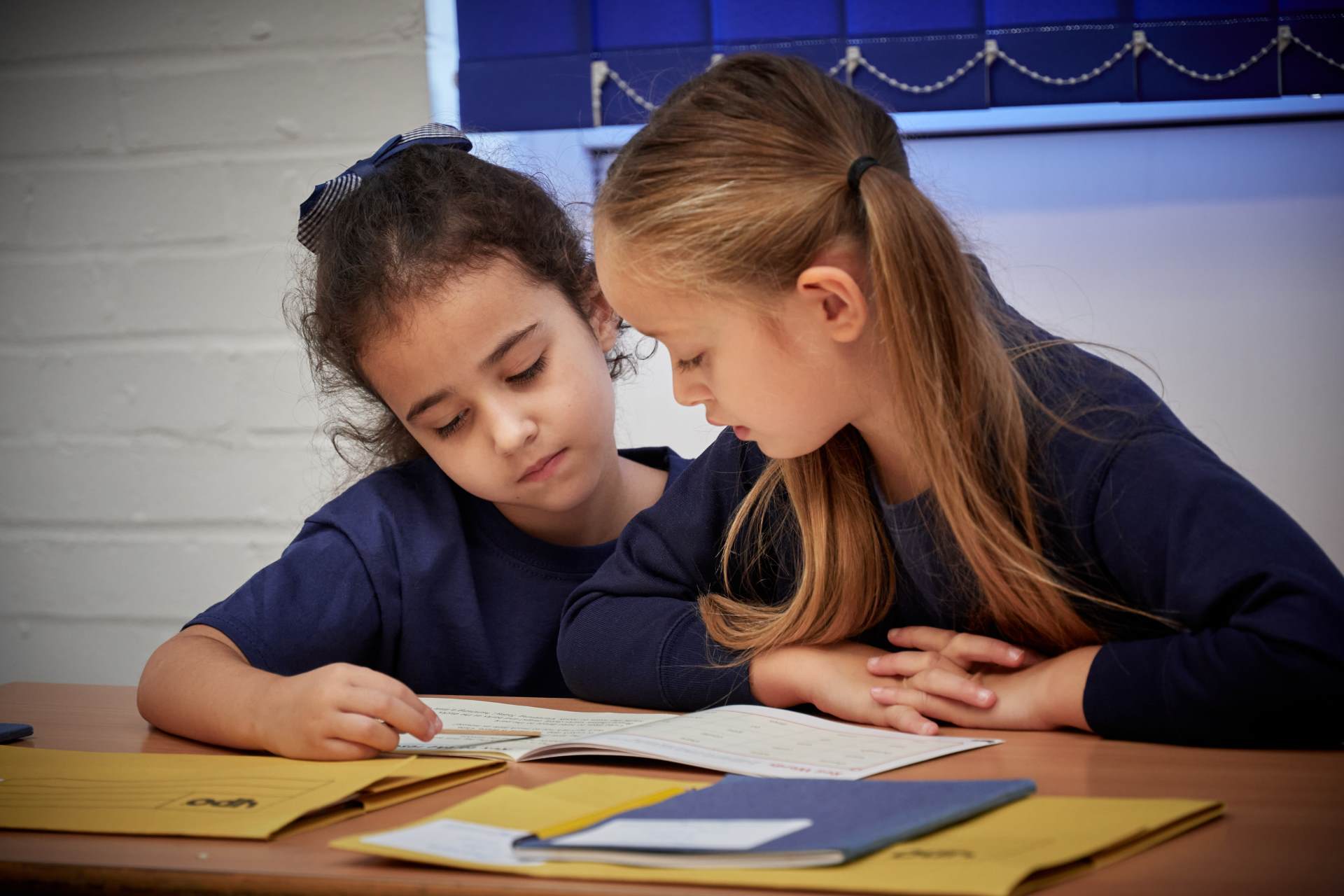 Children are expected to practise applying their phonics at home, through daily reading and home learning activities.
Children are expected to practise applying their phonics at home, through daily reading and home learning activities.
Every day, your child will bring home a sound sheet and a Book Bag Book matched to their colour level. Children are expected to complete the daily sound sheet and return it to school for their phonics lesson the next day. The Book Bag Book should also be read aloud to an adult every night at home. This should be recorded in the Reading Record, as evidence that the child has read at home. The Book Bag Book will be changed weekly to allow lots of practice. Children on Yellow level and above will bring home two Book Bag Books, both of which should be read alternately throughout the week.
In addition to this, children may bring home a sheet or green and red words linked to the book they are reading in their phonics lesson to practise at home.

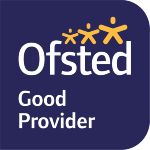
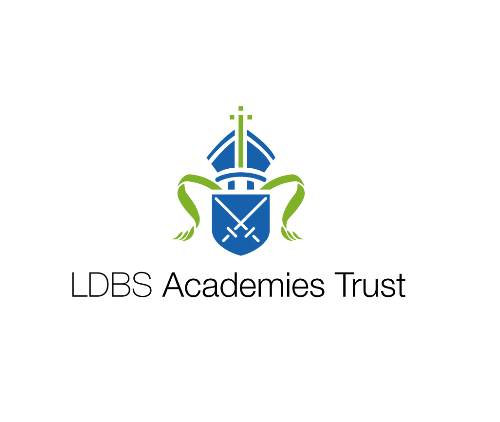

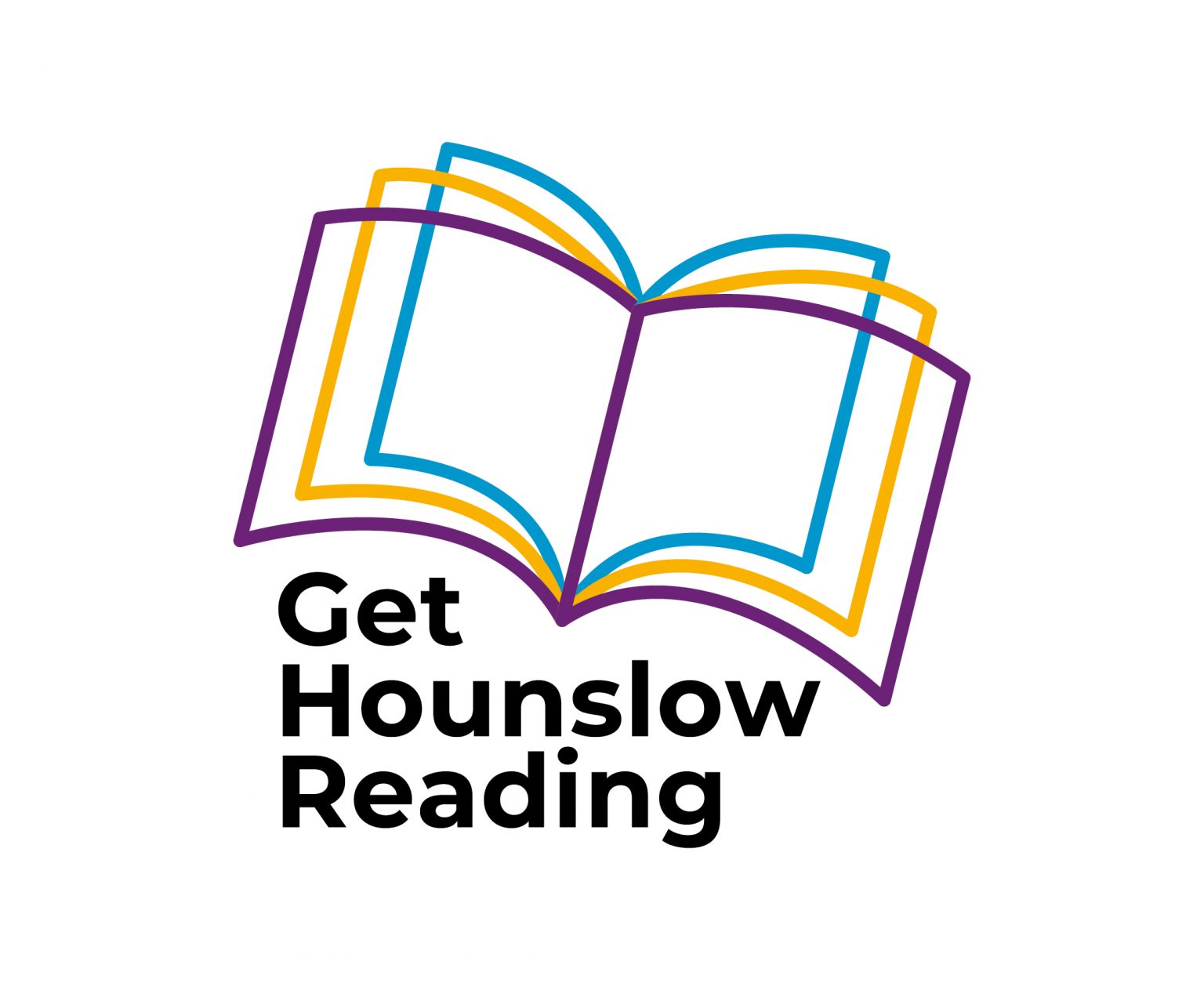

Social Media